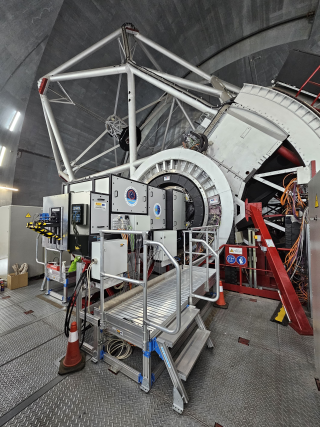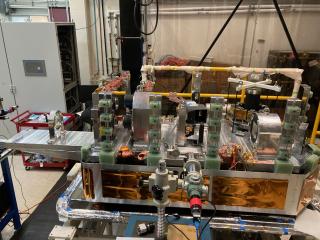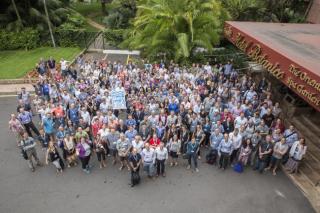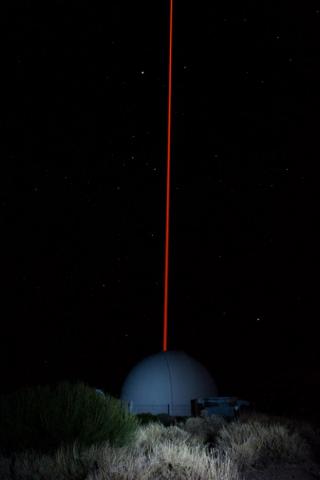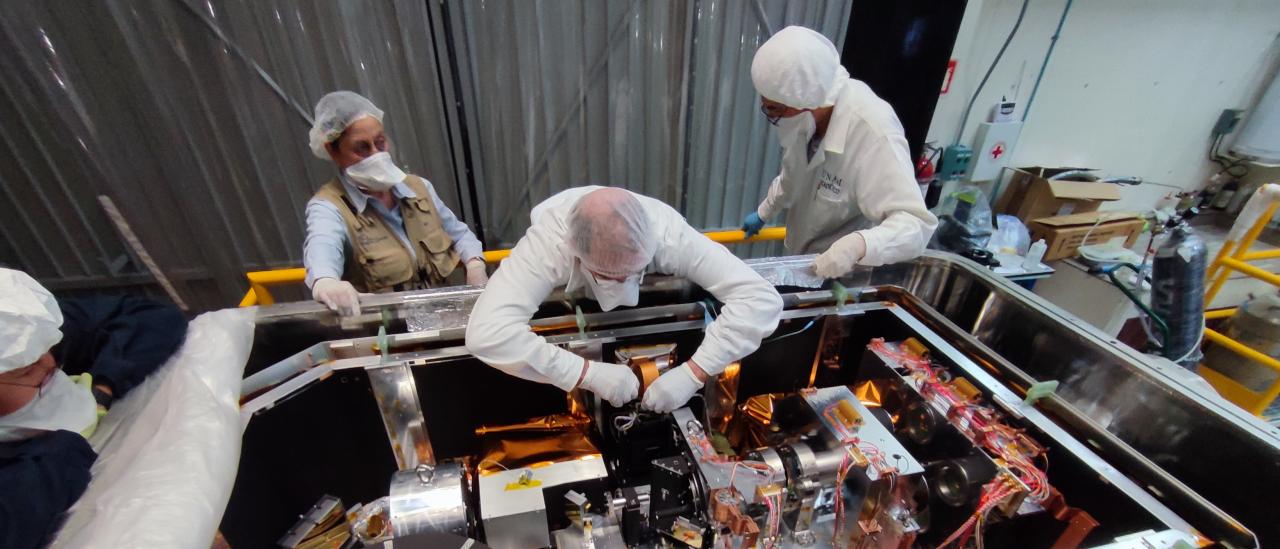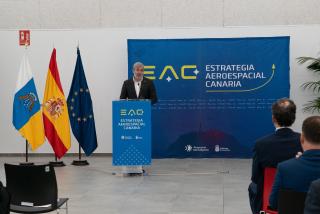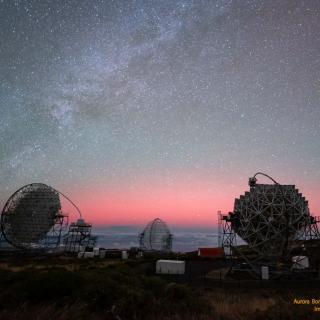The Instituto de Astrofísica de Canarias (IAC) has successfully completed the integration of the scientific detector into the FRIDA (inFRared Imager and Dissector for Adaptive Optics) instrument, an integra-field camera and spectrograph designed to work with the adaptive optics system of the Gran Telescopio Canarias (GTC or Grantecan), the world's largest optical and infrared telescope, located at the Roque de los Muchachos Observatory in La Palma.
The integration was carried out in the laboratories of the National Autonomous University of Mexico (UNAM) in Mexico City by a team from the IAC. "During the tests, the correct operation of the detector at cryogenic temperatures was verified, marking the beginning of the final testing phase of the instrument before its final acceptance and transfer to the observatory," explains Marcos Reyes Garcia-Talavera, head of the IAC's Instrumentation Department.
FRIDA is designed to operate in the near-infrared range and will combine ultra-high-resolution imaging with three-dimensional spectroscopy, making it a key tool for the detailed study of astronomical objects such as planetary nebulae, star-forming regions, distant galaxies, and planets in the Solar System. Its innovative design includes an integral field camera with multiple spatial scales, high-resolution diffraction gratings, and a 2048 x 2048 pixel HAWAII-2RG infrared detector, developed by the IAC based on the EMIR instrument control system.
The GTC already has a suite of high-quality scientific instruments that have demonstrated excellent performance and contributed to a significant number of scientific publications. These include OSIRIS, EMIR, MEGARA, and HiPERCAM, each with unique capabilities for observing the universe at different wavelengths and temporal and spatial scales. The addition of FRIDA to this infrastructure will further strengthen Grantecan's observational capabilities, especially in the near-infrared and adaptive optics field.
A new window to the universe with cutting-edge technology
Thanks to its ability to obtain images and spectral data at angular scales of the order of 0.02 arcseconds—five times better than some current instruments—FRIDA will enable us to address major scientific challenges, such as the study of complex structures in nebulae, the detection of protoplanetary disks and stellar companions, and the characterization of galaxies with intense star formation.
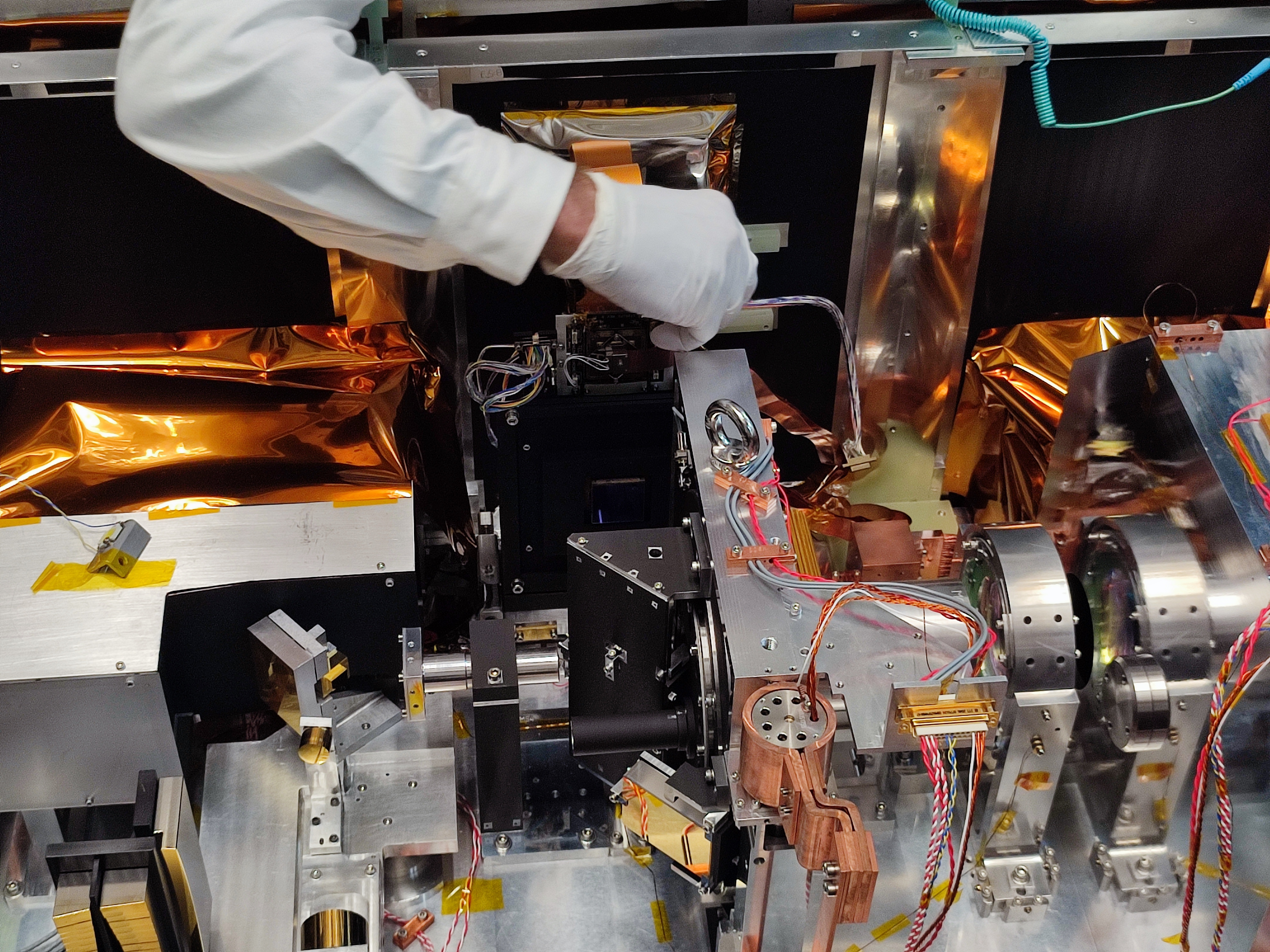
This level of precision will be possible thanks to its installation on the GTC's Nasmyth-B platform, just behind the GTCAO adaptive optics system. This system will allow for routine observations with sub-arcecond angular resolution , down to the telescope's diffraction limit, representing up to a fourfold improvement over the Hubble Space Telescope's capabilities at the same infrared wavelengths.
“FRIDA has been specifically designed to take full advantage of these exceptional conditions in both direct imaging and integral field spectroscopy modes. Furthermore, the future incorporation of a laser guide star system at GTCAO will enhance its performance,” notes Jesús Patrón Recio, IAC engineer and project manager for the Adaptive Optics and Laser Guide Star for GTC (GTCAO LGS) project. Together with software engineer Enol Matilla Blanco, they carried out the integration and commissioning of the detector and various instrument control systems at UNAM.
The development of FRIDA is the result of close international collaboration led by the Institute of Astronomy at UNAM with the participation of the IAC, the University of Florida (UF), and the Complutense University of Madrid (UCM).
The GTC, part of Spain's Unique Scientific and Technical Infrastructures (ICTS) network, is funded by the Autonomous Community of the Canaries and the Spanish State; (co-financed with FEDER funds and European Regional Development Funds). It has international participation from institutions in Mexico (IA-UNAM, UNAM Institute of Astronomy; INAOE, National Institute of Astrophysics, Optics and Electronics, both co-financed by CONACYT, Mexico's National Council of Science and Technology) and the United States (University of Florida Research Foundation). Its advanced instrument suite, which will soon be joined by FRIDA, consolidates its position as one of the world's most advances astronomical facilities.
Contacto:
Marcos Reyes Garcia, mreyes [at] iac.es (mreyes[at]iac[dot]es)
Jesús Patrón Recio, jesus.patron [at] iac.es (jesus[dot]patron[at]iac[dot]es)
